Foreign News
Japan voting for new leader in shadow of scandals
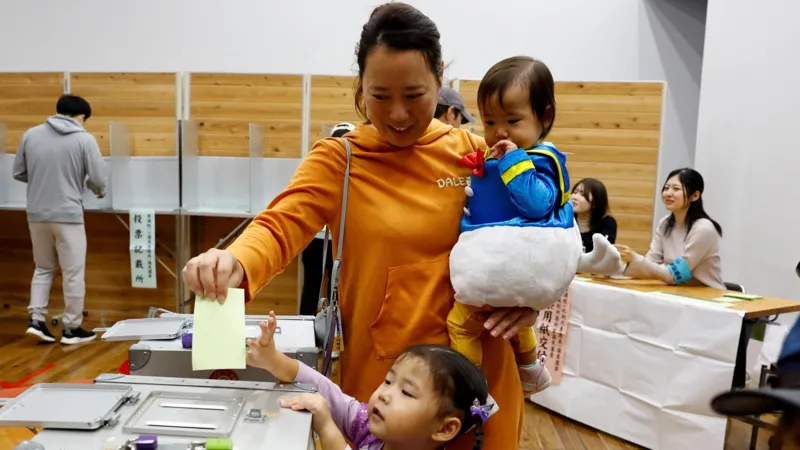
Japanese voters are today heading to the polls in a snap election, following a tumultuous few years for the ruling party which saw a “cascade” of scandals, widespread voter apathy and record-low approval ratings.
The election was announced by Shigeru Ishiba three days after he was selected as the leader of the ruling Liberal Democratic Party (LDP) – before he had been officially sworn in as prime minister.
The decision was made despite the LDP seeing approval ratings of below 20% earlier in the year, in the wake of a political fundraising corruption scandal.
Yet the LDP still remains the strongest contender against opposition parties which have failed to unite, or convince voters they are a viable option to govern.
The main opposition party had an approval rating of just 6.6% before parliament was dissolved.
“It is so hard to make decisions to choose parties, I think people are losing interest,” Miyuki Fujisaki, a long-time LDP supporter who works in the care-home sector, told the BBC ahead of polls opening.
The LDP, she said, has its problems with alleged corruption, “but the opposition also does not stand out at all”.
“They sure complain a lot, but it’s not at all clear on what they want to do,” the 66-year-old said.
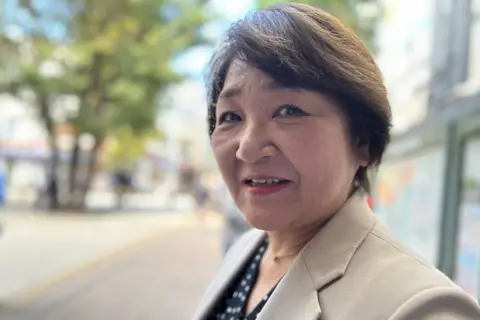
For all the apathy, politics in Japan has been moving at a fast pace in recent months.
Shigern Ishiba took over as prime minister after being voted in by the ruling party following his predecessor Fumio Kishida – who had been in the role since 2021 – making a surprise decision to step down in August.
The move to call the election came at a time when the LDP is desperate to restore its tarnished image among the public. Ishiba – a long-time politician who previously served as defence minister – has described it as the “people’s verdict”.
But whether it’s enough to restore trust in the LDP – which has been in power almost continuously since 1955 – is uncertain.
A series of scandals has tarnished the ruling party’s reputation. Chief among them is the party’s relationship with the controversial Unification Church – described by critics as a “cult” – and the level of influence it had on lawmakers.
Then came the revelations of the political funding corruption scandal. Japan’s prosecutors have been investigating dozens of LDP lawmakers accused of pocketing proceeds from political fundraising events. Those allegations – running into the millions of dollars – led to the dissolution of powerful factions, the backbone of its internal party politics.
“What a wretched state the ruling party is in,” said Michiko Hamada, who had travelled to Urawa station, on outskirts of Tokyo, for an opposition campaign rally.
“That is what I feel most. It is tax evasion and it’s unforgivable.”
It strikes her as particularly egregious at a time when people in Japan are struggling with high prices. Wages have not changed for three decades – dubbed “the lost 30 years” – but prices have risen at the fastest rate in nearly half a century in the last two years.
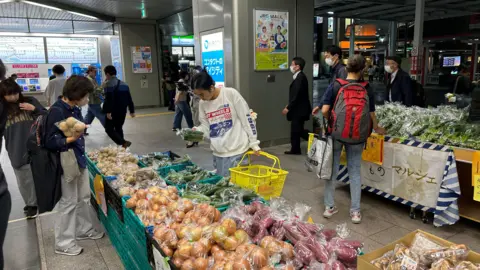
This month, as voters were getting ready to go to the polls, saw more price hikes on thousands of food products as well as other day-to-day provisions like mail, pharmaceuticals, electricity and gas.
“I pay 10,000 yen or 20,000 yen ($65 – $130; £50 – £100) more for the food per month than I used to,” Ms Hamada said. “And I’m not buying the things I used to buy. I am trying to save up but it still costs more. Things like fruit are very expensive.”
She is not the only one concerned with high prices. Pensioner Chie Shimizu says she now must work part-time to make ends meet.
“Our hourly wage has gone up a bit but it does not match the prices,” she told the BBC as she picked up some food from a stand at Urawa station. “I come to places like this to find something cheaper and good because everything in regular shops is expensive.”
Ms Shimizu has not voted for years but might this time – although she is not sure which candidate or which party to vote for.
“I can’t find anyone that I want to vote for. I feel like there’s no one who I can trust to be our leader. I wonder about those who become an MP for their own greed.”
Against this backdrop, it might look like Ishiba has taken a political gamble. His party had held 247 of 465 seats in the lower house, while its coalition partner, Komeito, had 32. A party needs 233 seats to control the house, known as the Diet.
There are now fears Komeito may fail to reach that number again, while the main opposition – which had 98 seats in the previous parliament – began to pick up momentum with voters ahead of Sunday’s election.
“I think the LDP has dug itself a very deep hole to climb out of. It does not enjoy public trust, and why should it? There’s just been a cascade of scandals,” Jeff Kingston, professor of Asian studies and history at Temple University Japan, told the BBC.
But he does not think any of this will necessarily lead to the party losing the elections.
“I think they (LDP) are worried they’re going to lose some marginal seats, and there are questions hanging over Komeito and how effective a coalition partner they will be,” Prof Kingston said.
Should they pull off a win, Miyuki Fujisaki, the care-home sector worker, warns they will have to do more than just pay lip service to change.
“I want them to show us what they are going to do so this [the scandals] doesn’t happen again,” she said. “They need to prove it – not just say it like they often do in the election time.”
[BBC]
Foreign News
Fourth tourist dies of suspected methanol poisoning in Laos
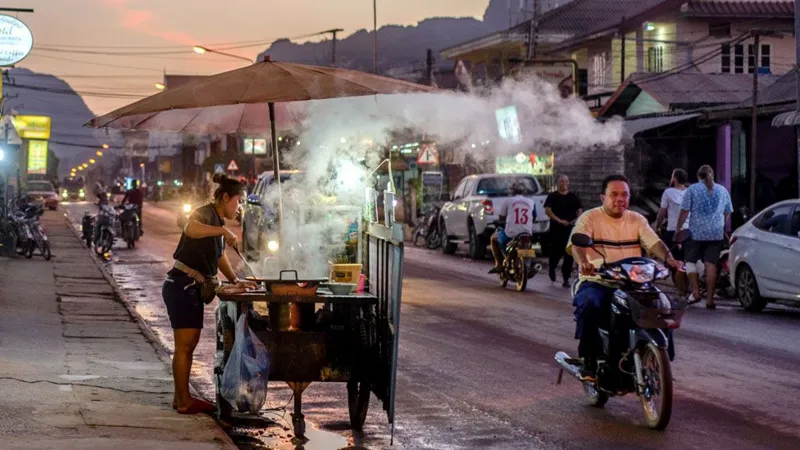
Australian teen Bianca Jones has become the fourth tourist to have died in a suspected mass poisoning in Laos.
The 19-year-old’s family confirmed her death to the media on Thursday. Hours earlier, the US State Department told the media that an American man died in the tourist town of Vang Vieng.
Two Danish women, aged 19 and 20, also died last week in Laos, Danish authorities confirmed, declining to share more due to confidentiality concerns.
The deaths remain under police investigation, but news reports and testimonies online from other tourists suggest they may have consumed drinks laced with methanol, a deadly substance often found in bootleg alcohol.
Jones’s friend Holly Bowles is in hospital on life support, while a British woman is also reportedly in hospital.
New Zealand’s foreign ministry told local media on Thursday that one of its citizens was also unwell from suspected methanol poisoning. It is unclear how many more people have fallen ill.
Australian Prime Minister Anthony Albanese said the department of foreign affairs had confirmed Jones’s death.
“Our first thoughts in this moment are with her family and friends who are grieving a terrible and cruel loss,” Albanese said on Thursday afternoon.
“This is every parent’s very worst fear and a nightmare that no one should have to endure.”
He said he hoped Ms Bowles, who is currently at Bangkok Hospital, would recover well.
The US State Department said it was “closely monitoring” the situation with regards to the American victim, adding that it was up to local authorities to determine the cause of death.
Australian, New Zealand and UK authorities have each warned their citizens to be careful of methanol poisoning when consuming alcohol in Laos.
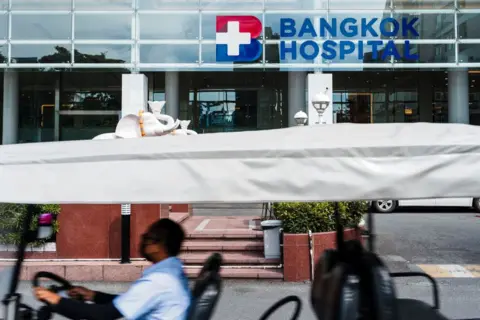
Nana Backpacker Hostel, where the two Australian women stayed in Vang Vieng, told the BBC that it was closed for police investigation.
The hostel’s manager told the Associated Press that the two women were among more than 100 guests who received free shots of Lao vodka from the hostel. The pair then headed out for the night, he said, adding that no other guests reported health issues.
The manager said he hoped the investigation would clear the hostel’s name, but said they have stopped giving free shots for now.
In a statement to Australian newspaper the Herald Sun, Jones’s family expressed their “deepest gratitude for the overwhelming support, love, and prayers we’ve received from across Australia”.
“We kindly ask for privacy as we navigate through our grief and begin to heal,” the statement said.
Unlike ethanol, the key component of alcoholic beverages, methanol is toxic to humans. Bootleg liquor producers sometimes add it to their drinks, however, as a cheap way to increase alcohol content.
Earlier this year, at least 57 people in India died after consuming methanol-laced liquor. Similar cases of mass poisoning have also been reported across the world, from the Philippines to Peru.
Vang Vieng is a small riverside town in central Laos, and a hub for backpackers in Southeast Asia.
[BBC]
Foreign News
MSF halts work in Haitian capital over attacks
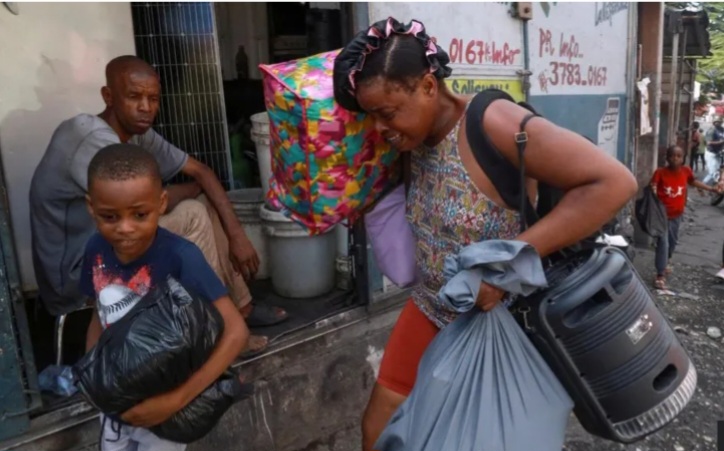
The humanitarian medical organisation Médecins Sans Frontières (MSF) has suspended its operations in the Haitian capital, Port-au-Prince, following a violent attack on its staff and the alleged killing of two patients they were treating by Haitian police officers.
The incident took place last week as violence continued to worsen in the country.
An estimated 25 people were killed in Port-au-Prince on Tuesday alone in what police say was a foiled attempt at a gang invasion of a wealthy neighbourhood.
Politically, the situation also remains critical with interim Prime Minister Garry Conille fired this month by the country’s ruling council – less than six months after he took office.
MSF says that on 11 November one of its ambulances carrying three young men with gunshot wounds was stopped by Haitian law enforcement officers.
Apparently supported by a paramilitary self-defence group, the men attacked the vehicle, removed two of the patients, took them outside hospital grounds and executed them.
The humanitarian group denounced the violence in a strongly worded statement last week, saying their personnel had been tear-gassed and held against their will for several hours.
While that incident appears to have been the final straw for MSF in Port-au-Prince, at least for the time being, it was not the only recent example of extreme aggression against their staff.
The announcement comes amid a worsening climate of violence in Haiti with some 25 suspected gang members killed in the capital on Tuesday.
The police say that residents helped officers to fight off an attempted attack on the upscale suburb of Pétion-Ville.
The neighbourhood was cordoned off after residents barricaded streets, some armed with machetes and makeshift weapons, in an apparent effort to prevent a gang invasion.
[BBC]
Foreign News
Living in Delhi smog is like watching a dystopian film again and again
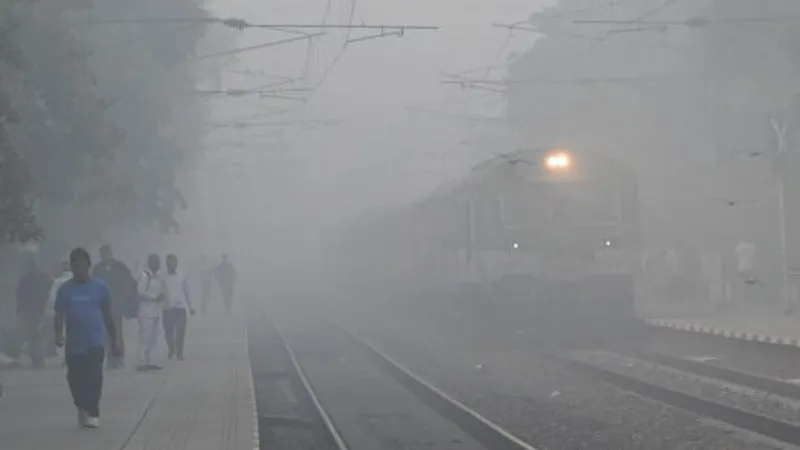
Winter has come to Delhi and with it, a familiar sense of gloom. The sky here is grey and there is a thick, visible blanket of smog.
If you stay outdoors for more than a few minutes, you can almost taste ash. You will feel breathless within minutes if you try to run or even walk at a brisk pace in the smog.
Newspapers are back to using words like toxic, deadly and poisonous in their main headlines.
Most schools have been shut and people have been advised to stay indoors – though those whose livelihoods depend on working outdoors can’t afford to do so.
Delhi’s air quality score was somewhere between 1,200 and 1,500 on Monday and Tuesday, according to different monitoring agencies. The acceptable limit is less than 100.
These scores measure the levels of particulate matter – called PM 2.5 and PM10 – in the air. These tiny particles can enter the lungs and cause a host of diseases.
On social media, people have been expressing shock, disappointment and anguish that it’s all happening again.
Along with the gloom, there is a strong sense of déjà vu – like we have seen this all many times before in the past 15 years.
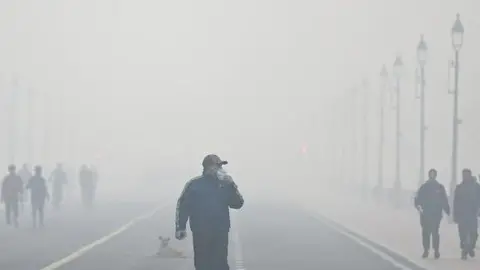
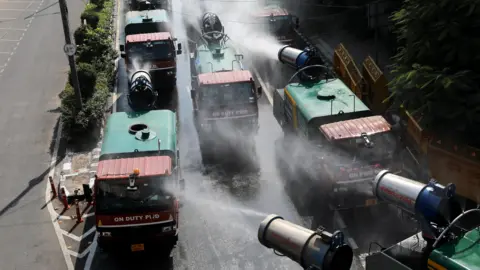
Covering this story feels like watching (and being in) the same dystopian film every year – following the same characters, plot and script. The outcome is always the same – nothing changes.
The parks are empty again – people, particularly children and the elderly, have been told to stay indoors.
Those who must work – daily-wage labourers, rickshaw pullers, delivery riders – are coughing but still going out.
Hospitals are seeing an increasing number of people coming in with respiratory problems.
And amid all this, we are back to the same question again – why does nothing change?
The simple answer is that solving Delhi’s air problem requires monumental efforts and coordination.
The sources of the problem are many. One of them is the practice of farmers burning crop remains to clear their fields quickly to sow seeds for the next yield.
This mostly happens in the neighbouring states of Punjab, Haryana and Uttar Pradesh. The smoke from the farm fires engulfs Delhi every winter and hangs low in the atmosphere as wind speeds reduce during winter months.
But farmers can’t be entirely blamed for this because this is the cheapest way of clearing fields.
Different governments have talked about providing machines and financial incentives to stop crop burning, but very little has happened on the ground.

Delhi itself produces a huge chunk of the pollution – emission from vehicles, construction and factories.
Every year, in the winter months, people get angry, journalists write and produce reports, politicians blame each other and courts fume – until we do it all over again the next year.
A public health emergency like this would spark mass protests in most democracies. But the anger in Delhi is mostly limited to social media.
Activists say the reason is that pollution doesn’t cause immediate problems for most people. Ingesting high levels of PM2.5 deteriorates health slowly. A Lancet study found that pollution led to more than 2.3 million premature deaths in India in 2019.
And then there is the class divide. People who can afford to temporarily leave the city do that, those who can buy air purifiers do that, and those who can vent on social media do that.
The rest, who don’t have these options, just go about their lives.
The collective angst has so far not resulted in a massive protest and, as the Supreme Court once observed, politicians just “pass the buck” and wait for the season to get over.
Experts say governments at the federal level and in different states need to leave their party politics behind and work together to solve this problem. They need to focus on long-term solutions.
And citizens need to hold politicians accountable and courts have to pass decisive orders months before the pollution worsens.
This year, we are again in the thick of the season and temporary measures have been announced, like banning construction work.
But can these bring Delhi’s elusive blue skies back? The evidence from the past few years doesn’t give much hope.
[BBC]
-
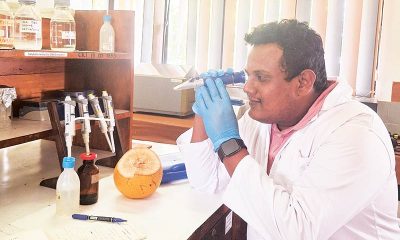
 Life style5 days ago
Life style5 days agoKing of coconuts heads for a golden future
-

 Latest News6 days ago
Latest News6 days agoColombo district preferential votes announced
-
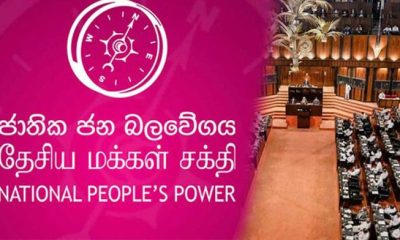
 News4 days ago
News4 days agoNPP appoints two defeated candidates as NL MPs
-

 News6 days ago
News6 days agoPresident warns his party: “We will fail if we view power as an entitlement to do as we please”
-
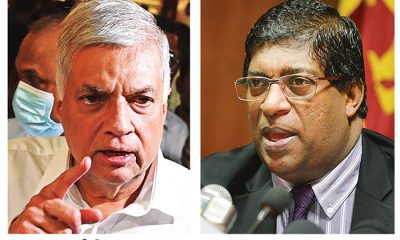
 News3 days ago
News3 days ago‘Gas Cylinder’ explodes; Ranil flays NDF Secy. for submitting Ravi’s name
-
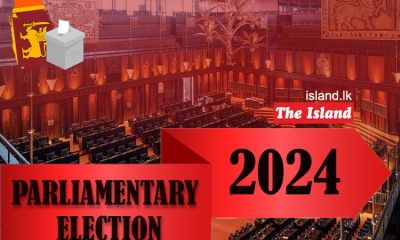
 Latest News7 days ago
Latest News7 days agoGampaha district: NPP 16, SJB 3
-

 Sports3 days ago
Sports3 days agoMaking batting compulsory for bowlers has worked – Theekshana
-

 Editorial6 days ago
Editorial6 days ago‘Maroon Wave’ and AKD Magic











